Shopping and chatting with ease from anywhere. What’s not to love?
Businesses interacting along the customer journey as a friend or family member would.

What is Conversational Commerce?
So, how do we define conversational commerce? It’s a way of shopping within a messaging channel, like Facebook Messenger or Telegram by interacting with a brand’s conversational AI.
When you open a messaging channel to interact with a brand, conversational AI is the technology that welcomes you and asks how it can help. You’re ultimately presented with just-the-right product or service you need.
It’s like a virtual department store with a virtual salesperson or assistant, helping you place food or taxi orders. It sounds like a refreshing at-home shopping and customer experience, right?
Chris Messina, coining the term in 2015, said, “Conversational commerce is about delivering convenience, personalization and decision support while people are on the go, with only partial attention to spare.
Americans spend more on jewelry, shoes, and watches at $100 billion than on higher education. But brick-and-mortar retail shopping still dominates the market. While e-commerce accounts for 16% of total retail sales. So it makes sense that brands want to offer alternative ways for customers to shop with ease.
The average female shopper will spend 400 hours shopping annually.
Source: beomingminimalist
Any business offering a service, whether it’s a meal, payment option, or a movie ticket can do so conversationally with AI. It’s customer service that’s more conversational and personalized. Conversational commerce platforms are on the rise.
To be successful, Facebook’s Product Marketing Communications Manager, Asher Rapkin, says brands need to ask themselves this question: “…. how do I take the thing that is best from my brand, that will work best in conversation and move it there.”
Brands that follow Rapkin’s advice are seeing success. Here’s a peek at how your brand can use it successfully and examples from brands that already are.
Conversational Commerce Examples
#1 Get a Higher Conversion Rate on Promotions
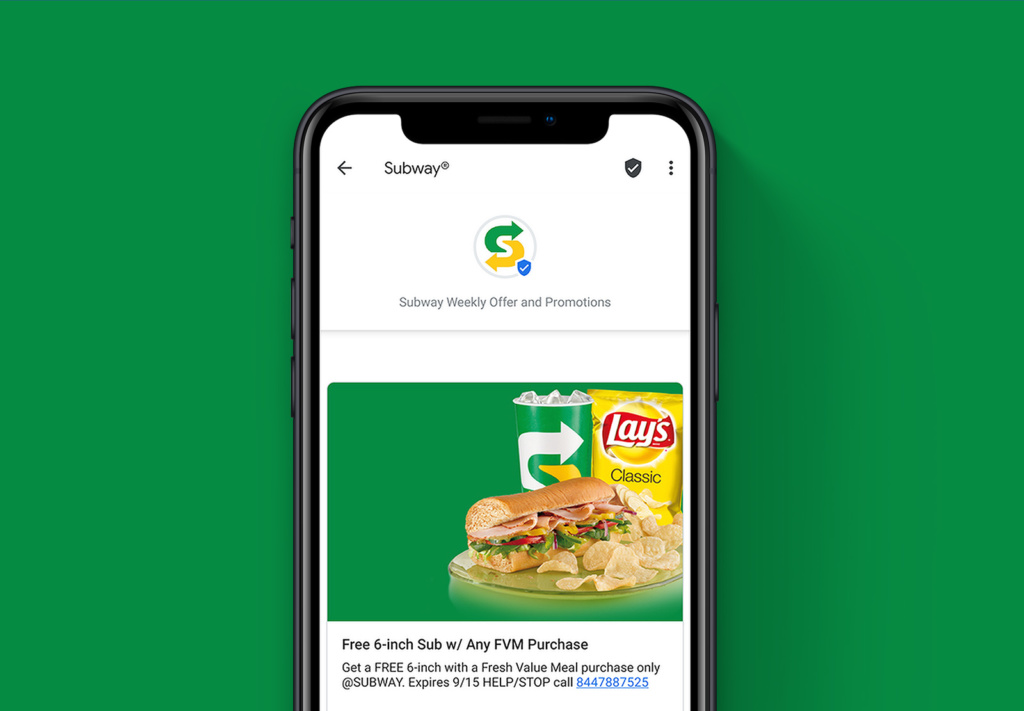
Are you looking for a fresh way to offer promotions and increase conversion rates? That’s what Subway found.
Subway, a leading fast-food chain, began offering customers mobile offers through SMS (Short Message Service) in 2015. But Subway wanted a more personalized way to interact with customers, deliver a better customer experience, and increase their conversation rates.
So the brand turned to RCS message(Rich Communication Services message) when it became available. RCS delivers richer images and media which Subway’s Chief Digital Marketing Officer, Carissa Ganelli, so accurately pointed out.
Ganelli stated, “As marketers, we know that images usually sell more and lift conversion rates, and you can’t do any of that in SMS.”
Subway offered two different deals: two-foot-long sandwiches for $11.99 and a $20 meal deal the following week. The results?
140% higher conversion rate than SMS on the two-foot-long offer
51% higher conversion rate on the $20 meal deal
Source: MMA Global
Ganelli was very excited with the results of RCS messaging vs. SMS for promotional offers. Subway plans to keep using RCS and expand its use to additional markets.
#2 Increase Response Rates & On-time Payments
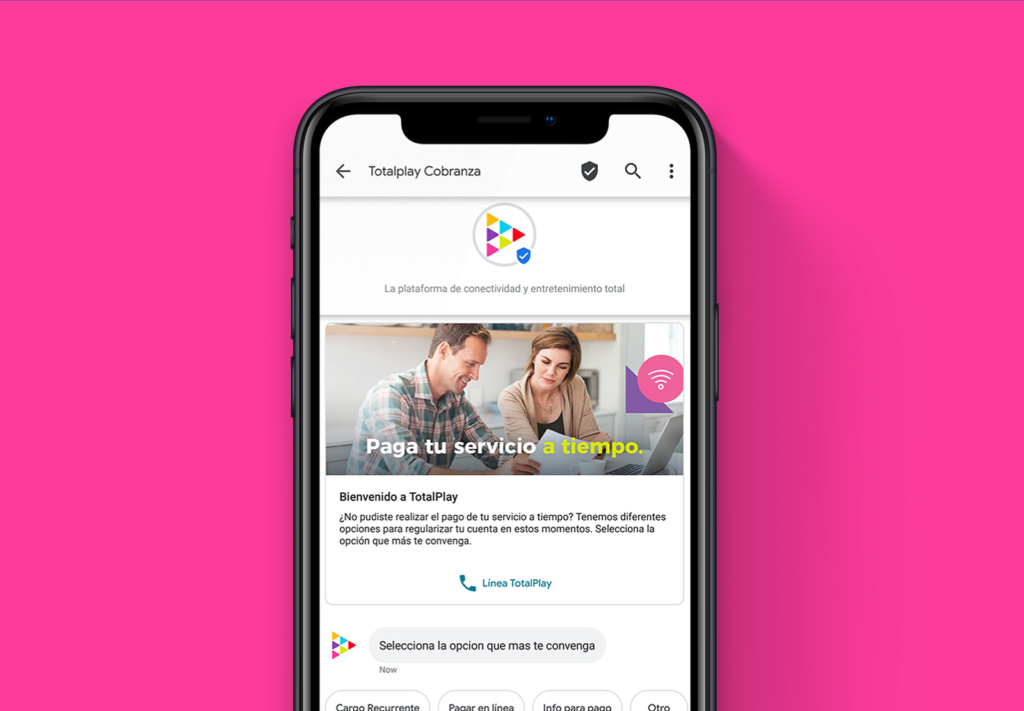
Want to get paid on time and increase customer response rates? Two companies in Mexico City increased their collection and response rates by leveraging the power of RCS.
Totalplay is a Mexican technology and entertainment company that offers TV, internet and phone services. Totalplay was using SMS to collect monthly payments from customers but wanted to close almost-due and past-due accounts faster.
Totalplay, saw a 78% better response rate than SMS and a 65% increase in overall payment collection when they tried RCS for three months.
Mildred Guillen, Totalplay’s debt collection senior manager, said: “We will continue to use RCS and develop more personalized campaigns in the future.”
CFE, Mexico’s electronic energy service provider, used RCS to tell customers where, when, and how they could pay their bills. Customers could update their account and contact customer service through the messaging channel.
CFE saw a 200% increase in response rates and a 25% increase in on-time payments.
“We’re thrilled with how RCS Business Messaging has helped us improve customer satisfaction and loyalty. We’re excited for the future.” – Marco Delgato, CFE Chief Digital Officer.
#3 Deliver a Better Customer Shopping Experience
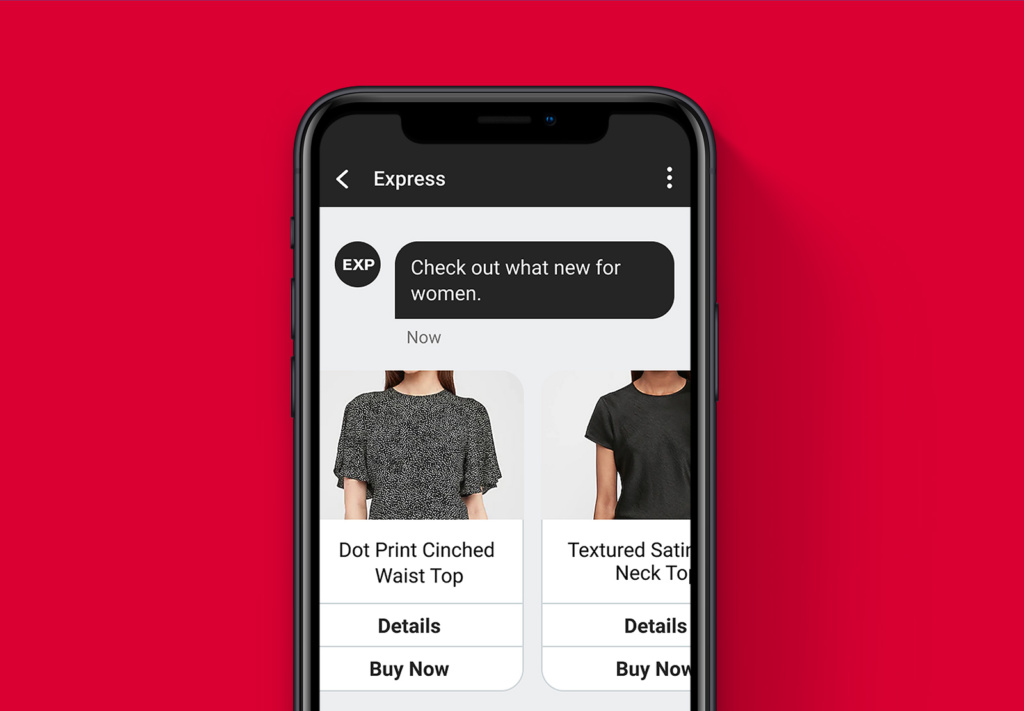
Mobile e-commerce is expected to drive 54% of online sales within the next year. 6 out of 10 consumers admit to “digital window shopping” on their mobile devices. And a majority of those consumers make an impulse purchase when they do.
Mobile customer experience is important. 57% of consumers will not recommend a business with a poor mobile experience. Half of customers will discontinue visiting the site of a brand they like, if the business isn’t mobile-friendly.
Consumers shopping on mobile devices will continue to do so over the next few years and they want a good experience when they do. Brands can deliver a better online shopping experience and boost sales in the process.
Brands and retailers such as Skechers and Express, are using conversational commerce AI to:
- Help consumers shop
- Purchase gift cards
- Find a store location
- Sign up for rewards programs
- Search for deals
#4 Increase Orders and Reservations
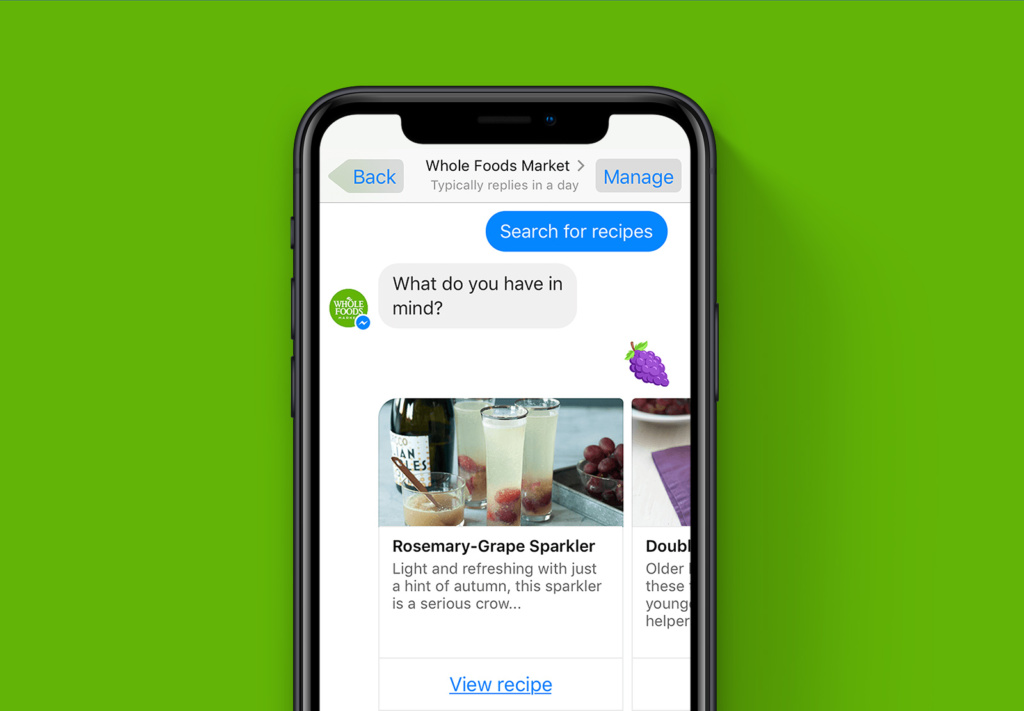
Restaurants, quick service, and grocery stores have the opportunity to increase orders and reservations. Customers can:
- Place orders
- Select delivery or carry out
- Apply discounts
- Make reservations
- Share reservations with others
Small local businesses like Chicago Fire and Barker’s Cafe are using conversational commerce AI, as well as national franchises such as Domino’s and Taco Bell.
Grocery chains like Whole Foods are providing more value to customers by interacting with them in a messaging channel. For example, in Facebook Messenger, consumers can view recipe options, complete with dietary restriction filters, as a complimentary online service.
#5 Offer Deals & Booking Services
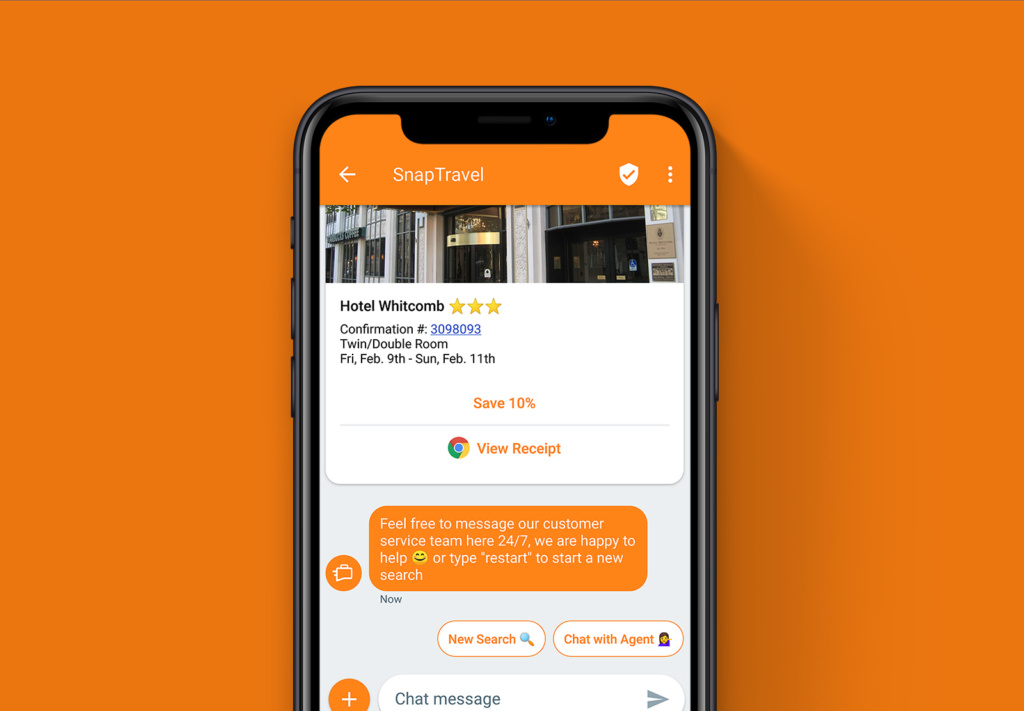
The travel and real estate industries are in on the action too. Snaptravel was one of the first companies to begin using conversational commerce. Snaptravel uses RCS to help customers search deals and book travel.
Here’s what Facebook had to say on their partnership with Snaptravel:
Conversational commerce is an area of immense opportunity and interest for us, and the level of consumer adoption that Snaptravel has achieved in this space so far is extraordinary. This is not only a unique approach to booking hotels, but also a new outlook on commerce as a whole…
Liron Wand, Head of Partnerships, Messenger at Facebook.
In the real estate space, Trulia offers a practical solution. Enter a location and price and Trulia will provide a list, along with updates for new homes on the market within your parameters.
Trulia’s conversational AI is most helpful for the questions about area demographics. Trulia gives you a run-down on the neighborhood, including schools, median age, and crime reports.
Instead of navigating a website, filtering and waiting for the update, you get the ease of entering all your parameters at once in one digestible summary.
How Will Your Brand Use Conversational Commerce?
The possibilities are limitless. Small and large brands alike are using AI to reach customers, boost sales, and interact in a personal way with consumers. There are many more examples than the few conversational commerce use cases showcased here.
From increasing conversion rates to receiving more on-time payments, the results from brands using RCS speak for themselves. Conversational commerce can help brands solve problems and satisfy customers. What’s not to love about that.
Subscribe to our Newsletter
Free Trial
Get Started With RCS
Business Messaging!
Unlock the power of RCS and revolutionize your customer engagement.


